Nishimonai Castle
-Technically built cornerstone castle of Onodera clan-
Overview
Name: Nishimonai castle (Nishimonai-jo)
Alias:
Place: Nishimonai Ugo town, Akita
Location: 39.187277526270556, 140.37533371397922
Type: Mountain Castle
Built: 14th century
Remaining remnants: Clay walls, dry moats and gate (transferred)
Title:
Nishimonai castle (西馬音内城) is located over a hill at the side of Nishimonaigawa river, in Nishimonai area at the center of Ugo town. Ugo town is the one at southwestern edge of Yokote basin, a long one of 80 kilometer long and 20 kilometer wide which occupies good part of south half of current Akita prefecture. Yokote basin is a rectangular shaped one faces north-northwest, and Nishimonai area is applicable to south-southwestern corner of the basin.
Yokote basin and Yuri Honjo or Nikaho area, coastal towns in south part of Akita prefecture, is divided wide line of Dewa Mountains. Nishimonai area is an entrance into the roads connects Yokote basin and these coastal towns, through mountainous road currently used as Route 368 or valley route along with Koyoshigawa river now used as Route 108. Because of its geographical condition once railway came to this town, and now it was already abolished but the town still keeps its importance.
Precise year is unknown but Nishimonai castle might be built at 14th century by Nishimonai clan, a branch family of Onodera clan. Onodera clan is said as originally a small lord of Shimotsuke province (Tochigi prefecture), and served to Yoritomo Minamoto (1147-1199), the founder of Kamakura Shogunate, then made achievement at the battle against Oshu Fujiwara clan. After the battle Onodera clan got Yokote area as their territory, then later moved to Yokote area in 14th century.
At first Onodera clan resided Inaniwa castle, one at the inside of deep valley at Inaniwa area, where is south edge of Yokote basin and currently famous for Inaniwa Udon noodle. Onodera clan gradually grew into a large power based on Inaniwa castle, and in 14th century the clan advanced into the main body of basin and moved their main base at Numadate castle at middle west edge of the basin.
Around this time Nanbu clan which was the strong lord of current Morioka prefecture frequently attacked Yokote basin from eastward across Ou mountains, then Onodera clan had to live at west part of the basin. But after the fierce battle, Onodera clan rejected Nanbu clan and finally stayed at Yokote castle as their main base. As Yokote castle stands at the east edge of the basin, Nishimonai castle became a base at western edge of the basin.
At the time of Kagemichi Onodera (1534-1597), Onodera clan became its peak period. At first Kagemichi faced the rebellion of the commander of Yokote castle and was once expelled, but being supported by intelligent and brave retainer Michitame Yagashiwa (?-1595), Kagemichi ruined rebellion army and recovered Yokote castle.
Later Kagemichi proceeded into southward to Mogami area of current Yamagata prefecture across hills, utilizing internal conflict of Mogami clan which was the lord of Yamagata castle, and placed their retainer Sakenobe clan as a commander. Kagemichi also tried to exercise power to current Yuri Honjo and Nikaho area across mountains, which was separately reigned by small lords called as Yuri Jyunito (12 lords of Yuri area).
As Yuri Honjo area is distant from Yokote basin across the mountain, Onodera clan tried to indirectly control through close small lords. Anyway as Onodera clan moved toward west and south ward across mountains, Nishimonai castle became an important forward base to store soldiers and supplies. Because of its location and function, Nishimonai castle became a cornerstone for Onodera clan.
But after 1570’s, neighbor warlords such as Mogami clan, Tozawa clan at Kakunodate castle, and Akita clan at current Akita city settled their internal conflicts and became centralized. These clans started expansion at once, and Onodera clan fall into severe situation in reversal. It was difficult to keep the front ahead of deep mountains, thus Sakenobe clan left Onodera clan to Mogami clan, and Onodera clan gradually lost authority to Yuri and Nikaho area.
Facing this situation Yoshimichi Onodera (1566-1646), son of Kagemichi, aggressively fought with surrounding warlord but could not change the situation and lost more territories. In late 1580’s, Mogami army at last intruded into Yokote basin, and Nishimonai castle became the last defense base of Onodera clan. To secure thir main base, Onodera clan reformed Nishimonai castle inputting their latest technology.
Roughly Nishimonai castle spreads reverse “L” shaped hill spreads along with xx river. The highest point of the hill is applicable to the crossing point of two lines, and secondary area, central area and third area continues in line. Central area is a rectangular area of 100 meter long and 40 meter wide, being protected by clay wall. Secondary area is a narrow and long flat area of 120 meter long and 20 meter wide, and third area is an independent square area of 50 meter long. Size of these core area is considerablly large compared with the power of Onodera clan, and these area might be used as a space for soldiers and supplies.
As two line of “L” letter are approach routes to core areas from hillside, these areas are securely protected by artificial structures. A long line gradually climbing up from hillside is a main route toward castle, thus this route is protected by front side fort and bottleneck point might be used as a front gate. Interestingly there is a small sunken place of 5 meter long square at the side of this main gate now used as a ground of small shrine, and it is unknown how this small hollow is used.
Another line of L letter is a wide and short ridge, and two large areas protected this ridge against outside. Especially outer area is a completely shaped secure fort being surrounded by clay walls, and it might be used as a waiting space of soldiers that make counter attack to the enemy attacking front side gate from backside.
Nishimonai castle effectively uses horizontal dry moat, including huge one guards core areas of the castle and small ones at main and backside gates. Also the size of this castle is over 500 meter long and 300 meter wide and larger than Yokote castle, the main base of Onodera clan. Nishimonai castle is exactly the keystone of Onodera clan.
Based on Nishimonai castle, Onodera clan desperately tried to keep their territory. In 1582, when Kagemichi visited Kyoto city, Yoshimishi stayed the province forcefully summoned hostage from small lords of Yuri clan. But hostages who repelled this policy voluntary killed themselves, and furious small lords allied and attacked Onodera clan. Onodera clan barely protected the border but lost their supporters in coastal area.
Furthermore, Mogami clan united Yamagata basin strengthened pressure toward Onodera clan. In 1586, Yoshimichi Onodera lead whole army and fought with Mogami army then once beat them. But during the absence of Onodera army to face with Akita clan, Mogami army finally intruded Yokote basin and captured its southern edge including Nishimonai castle. Hideyoshi Toyotomi who united whole Japan in 1590 approved this situation, and Onodera clan formally lost Nishimonai castle.
But Onodera clan did not give up Nishimonai castle. In 1596, Nishimonai clan and other lords once surrendered to Mogami clan recaptured hostages sent to Mogami clan and cooperatively rebelled.This army captured Nishimonai castle, and Onodera clan recovered south edge of Yokote basin. These conflicts clearly broke the policy of Toyotomi government that banns any battle between lords, but Toyotomi government lacked governance capacity and this did not become problem.
Finally in 1600, during the conflict between Mitsunari Ishida (1560-1600), the chief administrative staff of Toyotomi government, and Ieyasu Tokugawa (1543-1616), the largest lord, Onodera clan belonged to Kagekatsu Uesugi (1556-1623), a large lord of Aizu Wakamatsu castle (Fukushima prefecture) and was close to Mitsunari. Kagekatsu attacked Mogami clan and forced it into the corner, but in September, Ieyasu defeated Mitsunari at the battle of Sekigahara thus Kagekatsu had to cancel attack to Mogami clan.
Survived Mogami clan intruded into the territory of Onodera clan. Although there was no supporter for Onodera clan, but Onodera clan well fought against dominant Mogami army and kept Nishimonai castle. Finally Nishimonai castle was opened to Mogami army, and Onodera clan itself was confiscated its territory by Edo Shogunate. Whole part of current Akita prefecture was given to Satake clan, and Nishimonai castle was abolished at this time.
Now all building was lost but one gate is transferred to neighbor temple and still remains. Structure of castle is well remain over the mountain, even though covered by trees and bushes. In addition to physical remnants of the castle, in summer, local people holds a grand Nishimonai Bonodori dance to commemorate disappeared Onodera clan, which is regarded as one of three Bon dances along with Awaodori and Gujyoodori. Even though disappeared, the name of Onodera clan still lives at this area. It is necessary to pass the ground of elementary school, thus it is recommended to visit this castle on holidays.
Bus ride from JR East Ou Honsen line Yuzawa station (might be troublesome). 15 minutes drive from Yokote-Yuzawa Road Yuzawa interchange. Entrance of climbing road is inside former Mononishi elementary school.
Yokote Castle -Can not live under same sky-
Type: Mountain Castle
Built: 14th century
Remaining remnants: Clay walls, dry moats and gate (transferred)
Title:
Brief History
Nishimonai castle (西馬音内城) is located over a hill at the side of Nishimonaigawa river, in Nishimonai area at the center of Ugo town. Ugo town is the one at southwestern edge of Yokote basin, a long one of 80 kilometer long and 20 kilometer wide which occupies good part of south half of current Akita prefecture. Yokote basin is a rectangular shaped one faces north-northwest, and Nishimonai area is applicable to south-southwestern corner of the basin.
Yokote basin and Yuri Honjo or Nikaho area, coastal towns in south part of Akita prefecture, is divided wide line of Dewa Mountains. Nishimonai area is an entrance into the roads connects Yokote basin and these coastal towns, through mountainous road currently used as Route 368 or valley route along with Koyoshigawa river now used as Route 108. Because of its geographical condition once railway came to this town, and now it was already abolished but the town still keeps its importance.
Origin of Nishimonai castle
Precise year is unknown but Nishimonai castle might be built at 14th century by Nishimonai clan, a branch family of Onodera clan. Onodera clan is said as originally a small lord of Shimotsuke province (Tochigi prefecture), and served to Yoritomo Minamoto (1147-1199), the founder of Kamakura Shogunate, then made achievement at the battle against Oshu Fujiwara clan. After the battle Onodera clan got Yokote area as their territory, then later moved to Yokote area in 14th century.
At first Onodera clan resided Inaniwa castle, one at the inside of deep valley at Inaniwa area, where is south edge of Yokote basin and currently famous for Inaniwa Udon noodle. Onodera clan gradually grew into a large power based on Inaniwa castle, and in 14th century the clan advanced into the main body of basin and moved their main base at Numadate castle at middle west edge of the basin.
Around this time Nanbu clan which was the strong lord of current Morioka prefecture frequently attacked Yokote basin from eastward across Ou mountains, then Onodera clan had to live at west part of the basin. But after the fierce battle, Onodera clan rejected Nanbu clan and finally stayed at Yokote castle as their main base. As Yokote castle stands at the east edge of the basin, Nishimonai castle became a base at western edge of the basin.
Cornerstone of Onodera clan
At the time of Kagemichi Onodera (1534-1597), Onodera clan became its peak period. At first Kagemichi faced the rebellion of the commander of Yokote castle and was once expelled, but being supported by intelligent and brave retainer Michitame Yagashiwa (?-1595), Kagemichi ruined rebellion army and recovered Yokote castle.
Later Kagemichi proceeded into southward to Mogami area of current Yamagata prefecture across hills, utilizing internal conflict of Mogami clan which was the lord of Yamagata castle, and placed their retainer Sakenobe clan as a commander. Kagemichi also tried to exercise power to current Yuri Honjo and Nikaho area across mountains, which was separately reigned by small lords called as Yuri Jyunito (12 lords of Yuri area).
As Yuri Honjo area is distant from Yokote basin across the mountain, Onodera clan tried to indirectly control through close small lords. Anyway as Onodera clan moved toward west and south ward across mountains, Nishimonai castle became an important forward base to store soldiers and supplies. Because of its location and function, Nishimonai castle became a cornerstone for Onodera clan.
Reform under severe circumstance
But after 1570’s, neighbor warlords such as Mogami clan, Tozawa clan at Kakunodate castle, and Akita clan at current Akita city settled their internal conflicts and became centralized. These clans started expansion at once, and Onodera clan fall into severe situation in reversal. It was difficult to keep the front ahead of deep mountains, thus Sakenobe clan left Onodera clan to Mogami clan, and Onodera clan gradually lost authority to Yuri and Nikaho area.
Facing this situation Yoshimichi Onodera (1566-1646), son of Kagemichi, aggressively fought with surrounding warlord but could not change the situation and lost more territories. In late 1580’s, Mogami army at last intruded into Yokote basin, and Nishimonai castle became the last defense base of Onodera clan. To secure thir main base, Onodera clan reformed Nishimonai castle inputting their latest technology.
Structure of Nishimonai castle
Roughly Nishimonai castle spreads reverse “L” shaped hill spreads along with xx river. The highest point of the hill is applicable to the crossing point of two lines, and secondary area, central area and third area continues in line. Central area is a rectangular area of 100 meter long and 40 meter wide, being protected by clay wall. Secondary area is a narrow and long flat area of 120 meter long and 20 meter wide, and third area is an independent square area of 50 meter long. Size of these core area is considerablly large compared with the power of Onodera clan, and these area might be used as a space for soldiers and supplies.
As two line of “L” letter are approach routes to core areas from hillside, these areas are securely protected by artificial structures. A long line gradually climbing up from hillside is a main route toward castle, thus this route is protected by front side fort and bottleneck point might be used as a front gate. Interestingly there is a small sunken place of 5 meter long square at the side of this main gate now used as a ground of small shrine, and it is unknown how this small hollow is used.
Another line of L letter is a wide and short ridge, and two large areas protected this ridge against outside. Especially outer area is a completely shaped secure fort being surrounded by clay walls, and it might be used as a waiting space of soldiers that make counter attack to the enemy attacking front side gate from backside.
Nishimonai castle effectively uses horizontal dry moat, including huge one guards core areas of the castle and small ones at main and backside gates. Also the size of this castle is over 500 meter long and 300 meter wide and larger than Yokote castle, the main base of Onodera clan. Nishimonai castle is exactly the keystone of Onodera clan.
Struggle for Nishimonai castle
Based on Nishimonai castle, Onodera clan desperately tried to keep their territory. In 1582, when Kagemichi visited Kyoto city, Yoshimishi stayed the province forcefully summoned hostage from small lords of Yuri clan. But hostages who repelled this policy voluntary killed themselves, and furious small lords allied and attacked Onodera clan. Onodera clan barely protected the border but lost their supporters in coastal area.
Furthermore, Mogami clan united Yamagata basin strengthened pressure toward Onodera clan. In 1586, Yoshimichi Onodera lead whole army and fought with Mogami army then once beat them. But during the absence of Onodera army to face with Akita clan, Mogami army finally intruded Yokote basin and captured its southern edge including Nishimonai castle. Hideyoshi Toyotomi who united whole Japan in 1590 approved this situation, and Onodera clan formally lost Nishimonai castle.
But Onodera clan did not give up Nishimonai castle. In 1596, Nishimonai clan and other lords once surrendered to Mogami clan recaptured hostages sent to Mogami clan and cooperatively rebelled.This army captured Nishimonai castle, and Onodera clan recovered south edge of Yokote basin. These conflicts clearly broke the policy of Toyotomi government that banns any battle between lords, but Toyotomi government lacked governance capacity and this did not become problem.
Fall of Onodera clan and afterward of castle
Finally in 1600, during the conflict between Mitsunari Ishida (1560-1600), the chief administrative staff of Toyotomi government, and Ieyasu Tokugawa (1543-1616), the largest lord, Onodera clan belonged to Kagekatsu Uesugi (1556-1623), a large lord of Aizu Wakamatsu castle (Fukushima prefecture) and was close to Mitsunari. Kagekatsu attacked Mogami clan and forced it into the corner, but in September, Ieyasu defeated Mitsunari at the battle of Sekigahara thus Kagekatsu had to cancel attack to Mogami clan.
Survived Mogami clan intruded into the territory of Onodera clan. Although there was no supporter for Onodera clan, but Onodera clan well fought against dominant Mogami army and kept Nishimonai castle. Finally Nishimonai castle was opened to Mogami army, and Onodera clan itself was confiscated its territory by Edo Shogunate. Whole part of current Akita prefecture was given to Satake clan, and Nishimonai castle was abolished at this time.
Now all building was lost but one gate is transferred to neighbor temple and still remains. Structure of castle is well remain over the mountain, even though covered by trees and bushes. In addition to physical remnants of the castle, in summer, local people holds a grand Nishimonai Bonodori dance to commemorate disappeared Onodera clan, which is regarded as one of three Bon dances along with Awaodori and Gujyoodori. Even though disappeared, the name of Onodera clan still lives at this area. It is necessary to pass the ground of elementary school, thus it is recommended to visit this castle on holidays.
Access
Bus ride from JR East Ou Honsen line Yuzawa station (might be troublesome). 15 minutes drive from Yokote-Yuzawa Road Yuzawa interchange. Entrance of climbing road is inside former Mononishi elementary school.
Related Castles
Yokote Castle -Can not live under same sky-

































































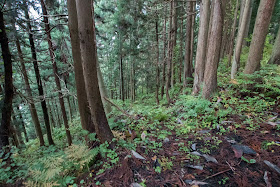















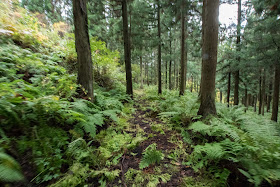


















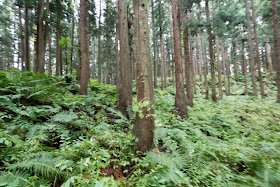

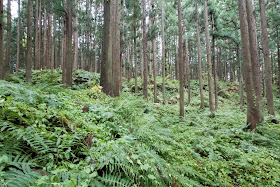























































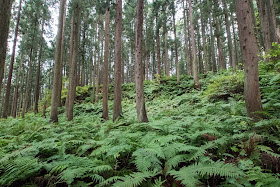














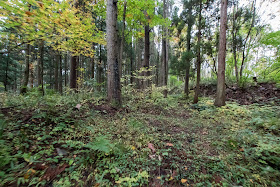




















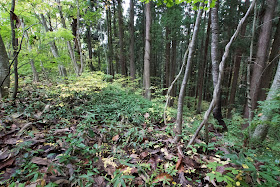



















































No comments:
Post a Comment